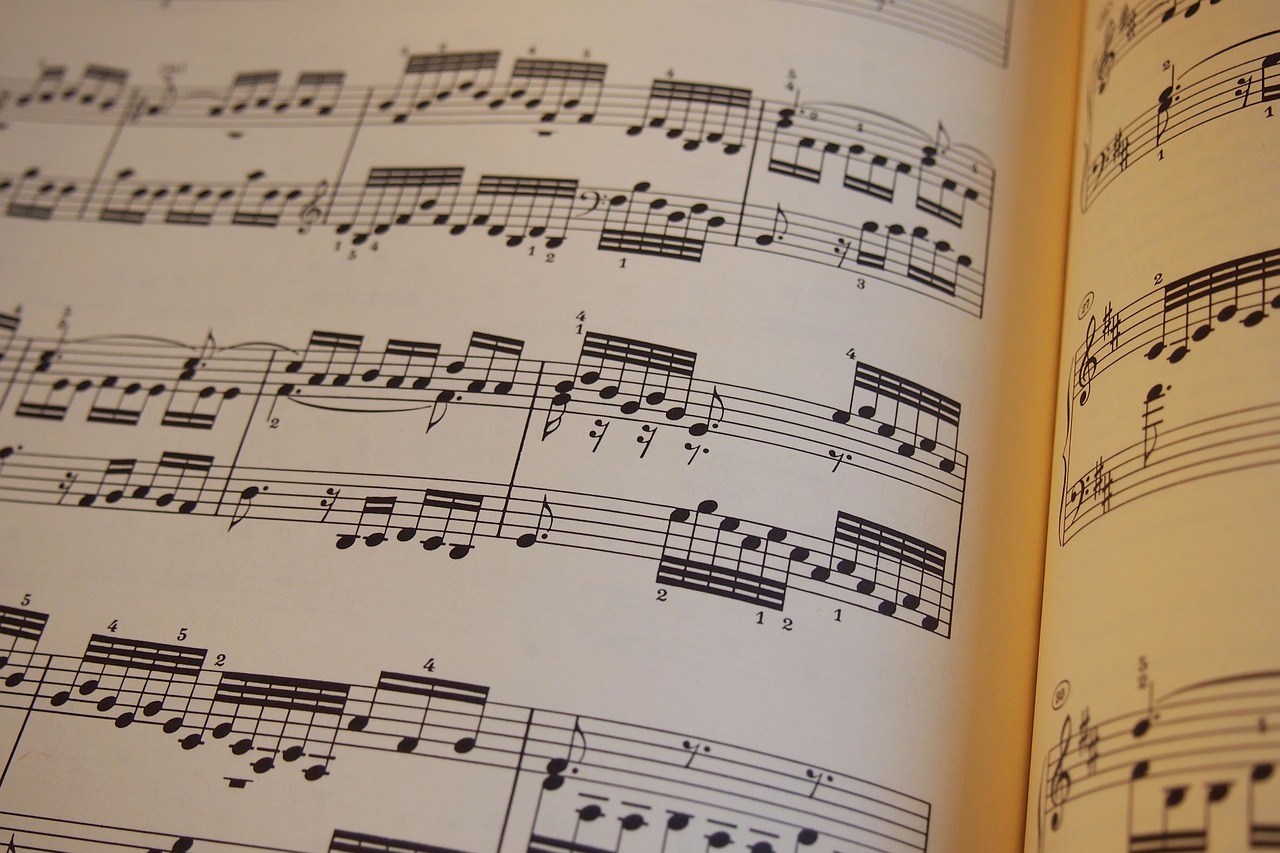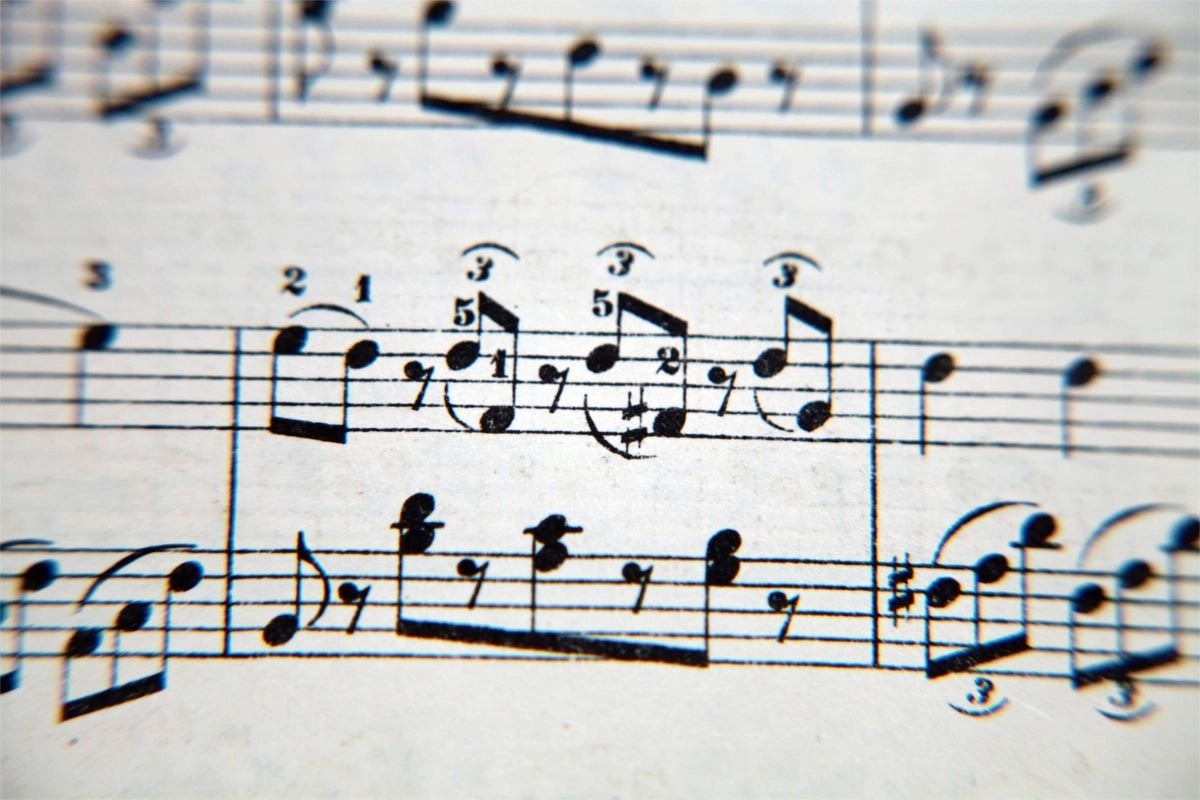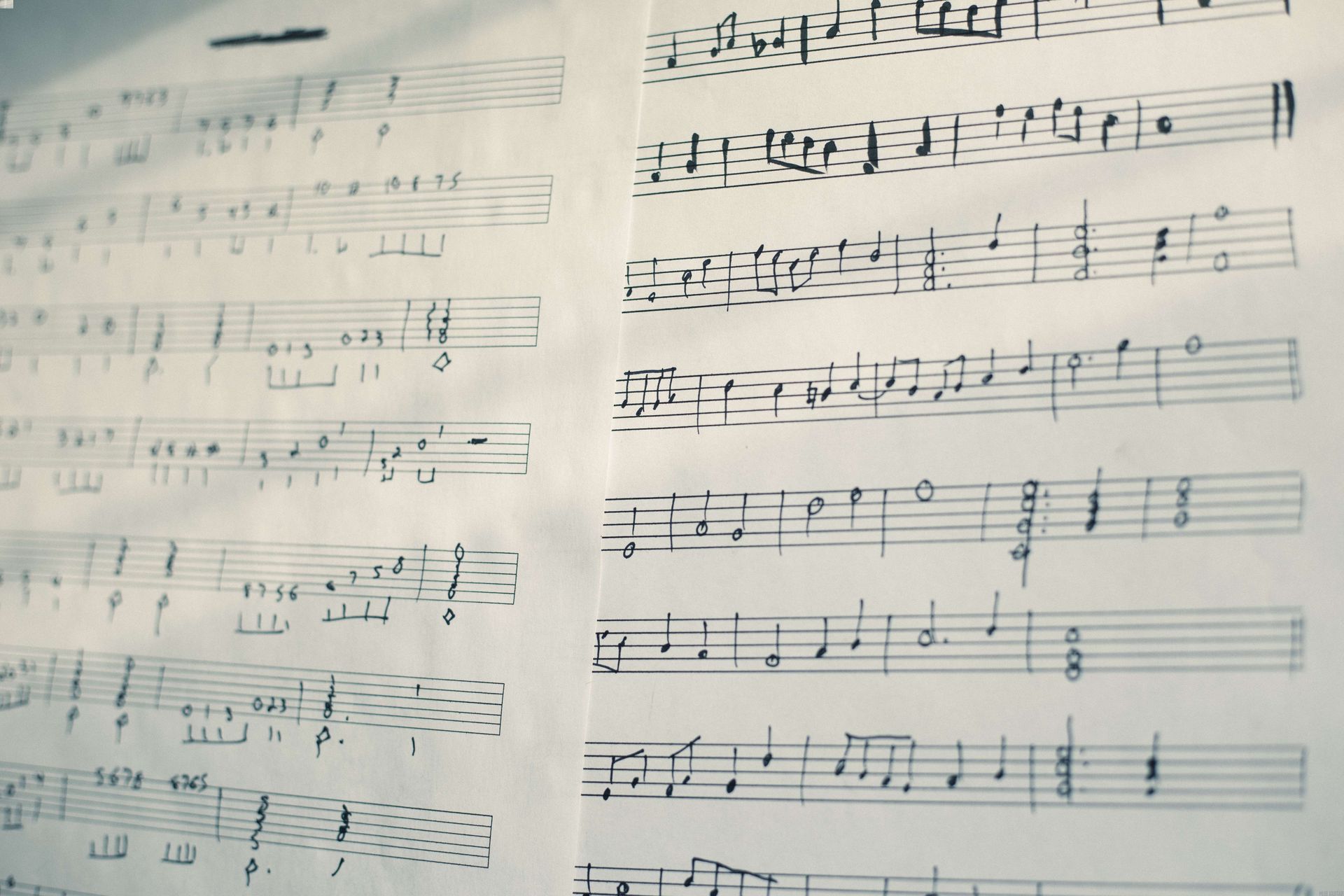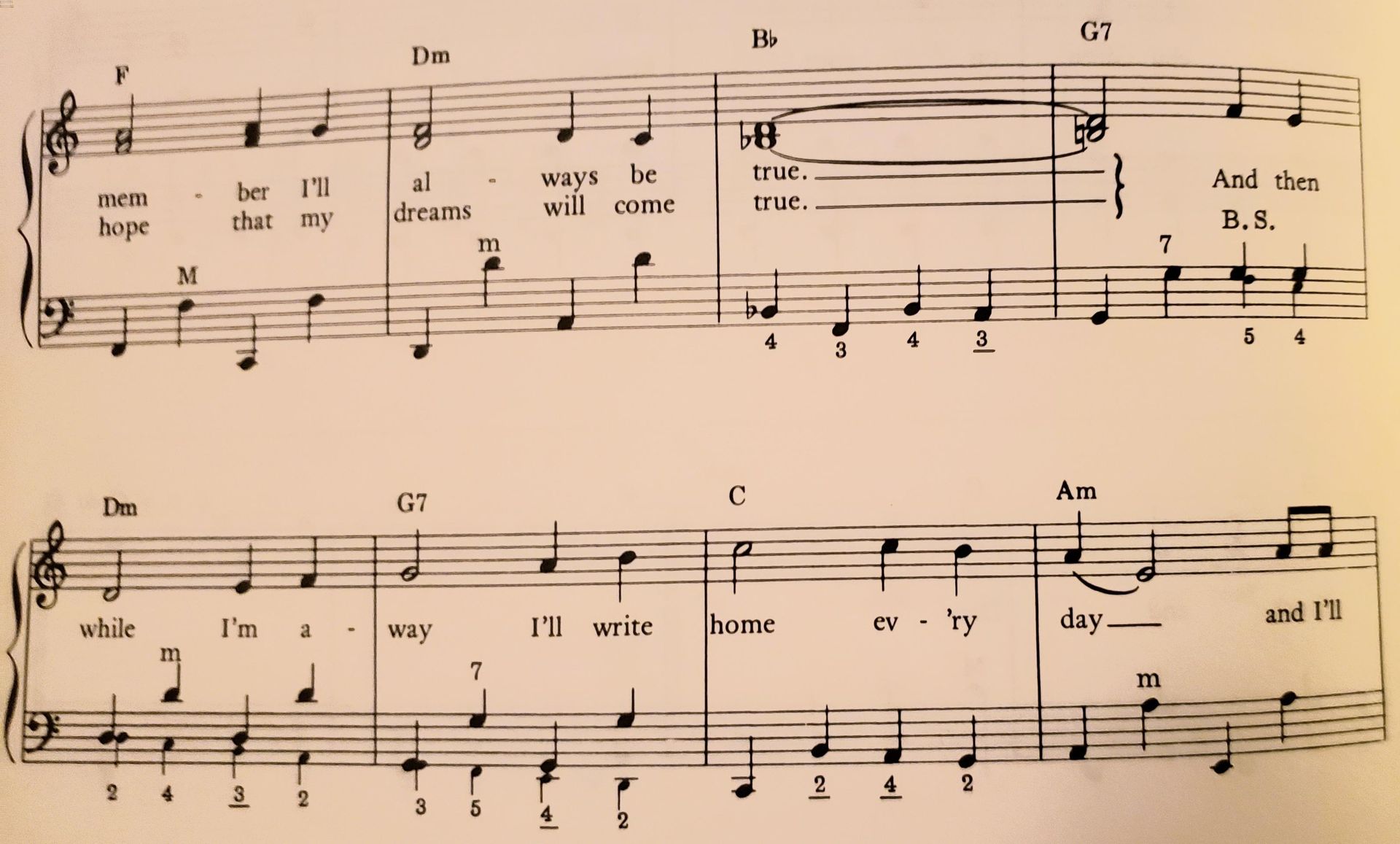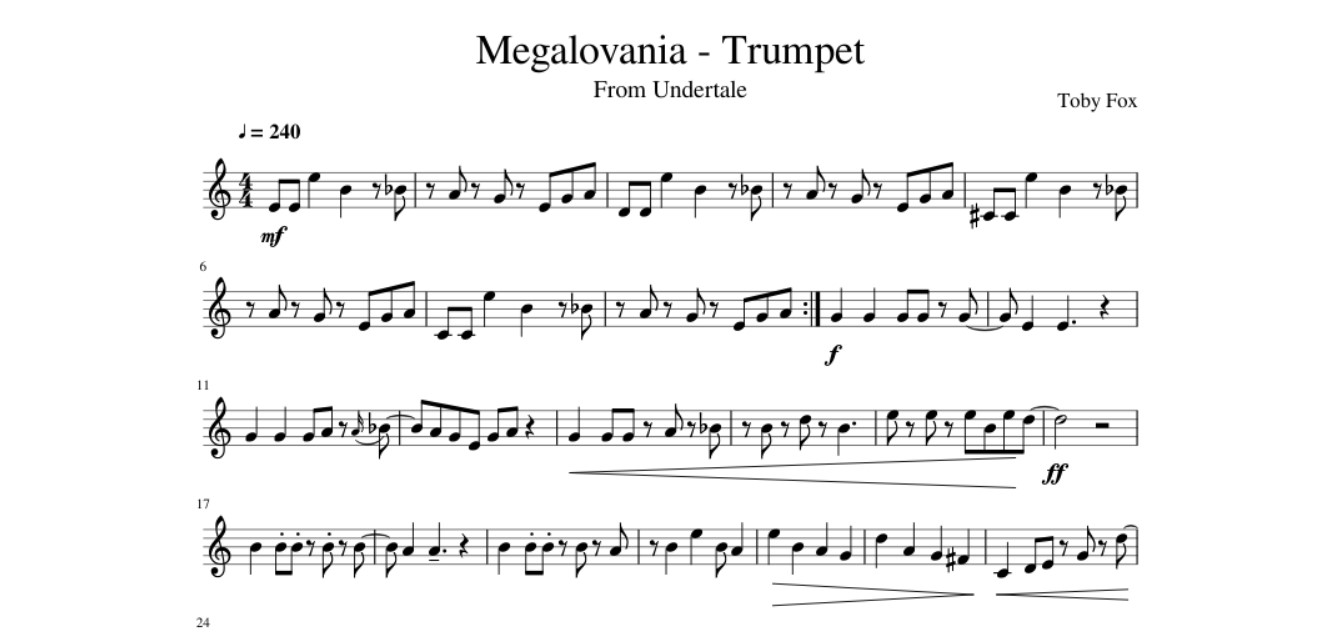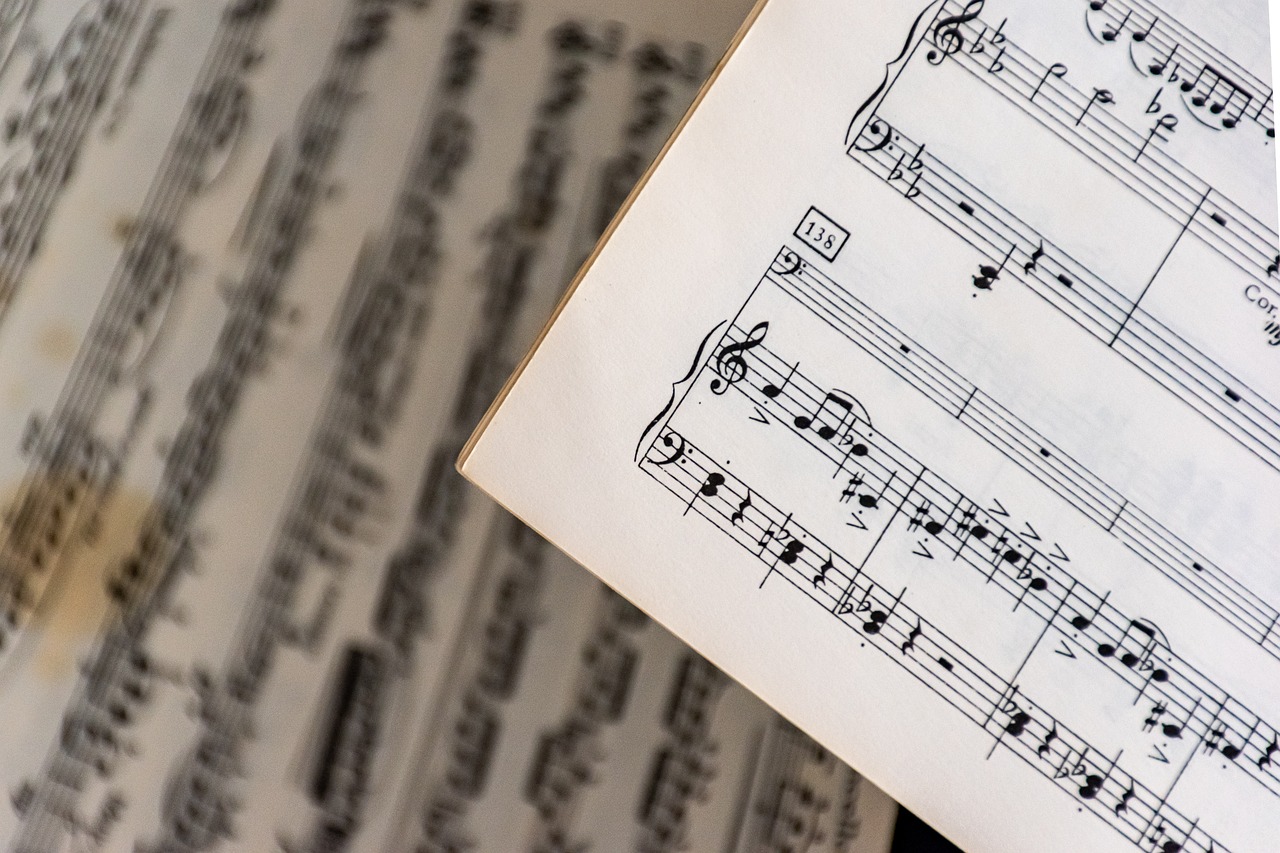Home>Instruments>Guitar>How To Read Bass Guitar Music Sheet
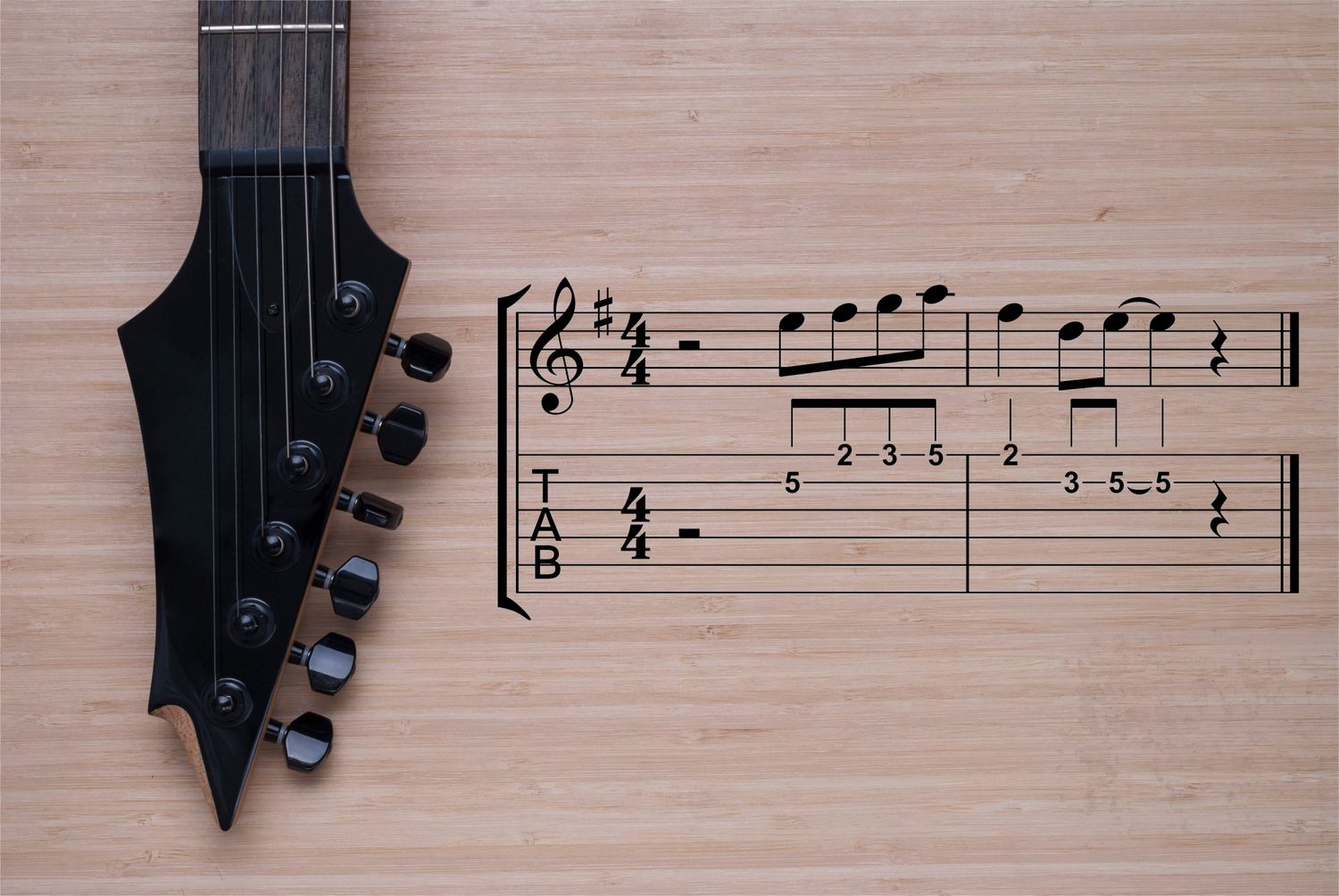

Guitar
How To Read Bass Guitar Music Sheet
Published: February 14, 2024
Learn how to read bass guitar music sheets and improve your guitar playing skills. Master the basics of reading guitar music notation and tabs.
(Many of the links in this article redirect to a specific reviewed product. Your purchase of these products through affiliate links helps to generate commission for AudioLover.com, at no extra cost. Learn more)
Table of Contents
Introduction
Playing the bass guitar is an exhilarating experience that forms the rhythmic foundation of countless musical pieces. To effectively harness the potential of this instrument, it is crucial to comprehend the art of reading bass guitar music sheets. While it may initially seem daunting, mastering this skill opens a gateway to a world of musical possibilities, allowing bassists to seamlessly integrate into various ensembles and expand their repertoire.
In this comprehensive guide, we will delve into the intricacies of reading bass guitar music sheets, empowering you with the knowledge and confidence to decipher musical notations, rhythms, chords, and scales. Whether you are a novice seeking to grasp the fundamentals or a seasoned player aiming to refine your skills, this article will serve as a valuable resource on your musical journey.
Understanding the structure of bass guitar music sheets is akin to deciphering a unique language that encapsulates the essence of a musical composition. By unraveling this musical code, you will gain the ability to breathe life into the notes on the page, infusing them with emotion and precision. Join us as we embark on this enlightening exploration of bass guitar music sheet reading, equipping you with the tools to elevate your musical prowess and unleash your creative potential.
Understanding the Basics of Bass Guitar Music Sheet
Before delving into the specifics of reading bass guitar music sheets, it is essential to grasp the foundational elements that constitute these musical notations. A typical bass guitar music sheet comprises a series of horizontal lines and spaces, collectively known as the staff, which serves as the framework for notating musical pitches and rhythms. Each line and space represents a different note, allowing musicians to discern the pitch of the corresponding string and fret on the bass guitar.
The notes on a bass guitar music sheet are represented by symbols called “note heads,” which are placed on the lines or in the spaces of the staff. Additionally, these notes may be accompanied by various musical symbols, such as clefs, key signatures, and time signatures, each of which imparts crucial information regarding the musical composition.
To effectively interpret bass guitar music sheets, it is imperative to familiarize oneself with the fundamental elements of musical notation, including the identification of notes, rests, and other symbols. By immersing oneself in the rudiments of music theory and notation, aspiring bassists can cultivate a strong foundation upon which to build their musical proficiency.
Furthermore, understanding the concept of pitch and how it correlates to the fretboard of the bass guitar is integral to reading music sheets accurately. This knowledge enables bassists to translate the notated pitches into precise finger placements on the instrument, facilitating a seamless transition from the abstract representation of notes on the page to the tangible expression of music through the bass guitar.
By comprehending the basics of bass guitar music sheet notation, aspiring bassists can embark on a journey of musical discovery, honing their ability to interpret and perform a diverse array of musical compositions with confidence and proficiency.
Reading Notes on the Bass Guitar Music Sheet
Mastering the art of reading notes on a bass guitar music sheet is a pivotal skill that empowers musicians to bring musical compositions to life. Each note on the staff denotes a specific pitch, and it is crucial for bassists to discern these notes accurately to reproduce the intended melodies and harmonies.
The placement of notes on the lines and spaces of the staff indicates the pitch of the corresponding string and fret on the bass guitar. For instance, a note positioned on the bottom line of the staff represents the open E string, while a note on the space above it signifies the F note on the first fret of the same string. As bassists ascend or descend the staff, the pitch of the notes follows a logical sequence, facilitating the translation of notated music into tangible fretboard positions.
Understanding the relationship between the notes on the staff and the fretboard is paramount for proficiently reading bass guitar music sheets. This knowledge enables bassists to navigate the musical landscape with precision, effortlessly translating visual notations into resonant melodies and captivating rhythms.
Furthermore, it is essential for bassists to familiarize themselves with the rhythmic values of notes and rests, as these symbols dictate the duration for which each note is played or held. By internalizing the rhythmic nuances embedded within the music sheet, bassists can infuse their performances with dynamic phrasing and rhythmic vitality, breathing life into the musical composition.
Aspiring bassists are encouraged to approach note reading as a continual learning process, gradually honing their ability to swiftly identify notes and translate them into expressive musical phrases. With dedicated practice and a keen eye for detail, the art of reading notes on a bass guitar music sheet becomes an intuitive and gratifying aspect of musical expression.
Understanding Rhythms and Time Signatures
Comprehending rhythms and time signatures is integral to interpreting bass guitar music sheets with precision and finesse. Rhythm, the temporal aspect of music, governs the duration and arrangement of notes, bestowing a sense of flow and momentum upon a musical composition.
Within bass guitar music sheets, rhythms are delineated by a diverse array of symbols, including note heads, stems, and flags, each signifying the duration of a note or rest. By internalizing the rhythmic values associated with these symbols, bassists can articulate each note with rhythmic clarity, infusing the music with dynamic energy and expressive phrasing.
Furthermore, time signatures play a pivotal role in shaping the rhythmic framework of a musical piece. Typically expressed as a fraction at the beginning of a composition, time signatures convey essential information regarding the number of beats in each measure and the type of note that receives one beat. For instance, the common time signature 4/4 indicates that each measure contains four beats, with a quarter note receiving one beat.
Understanding time signatures empowers bassists to navigate the rhythmic landscape of a musical composition with precision and confidence. By internalizing the rhythmic pulse and meter prescribed by the time signature, bassists can synchronize their playing with other musicians, fostering a cohesive and harmonious ensemble performance.
Aspiring bassists are encouraged to immerse themselves in rhythmic exercises and studies, honing their ability to internalize and execute diverse rhythmic patterns with dexterity and fluency. By cultivating a deep understanding of rhythms and time signatures, bassists elevate their musical acumen, enriching their performances with rhythmic vitality and expressive depth.
Identifying Chords and Scales on the Bass Guitar Music Sheet
As musicians delve into the realm of bass guitar music sheets, the ability to identify chords and scales assumes paramount significance, enriching their understanding of harmonic structures and melodic frameworks within a musical composition.
Chords, comprising multiple notes played simultaneously, are fundamental building blocks of harmony in music. On a bass guitar music sheet, chords are often represented by chord symbols placed above the staff, indicating the specific harmony to be performed at a given moment. By discerning these chord symbols and their corresponding voicings, bassists contribute to the harmonic foundation of the musical piece, infusing it with depth and resonance.
Moreover, scales, comprising sequential arrangements of notes, form the melodic scaffolding of a musical composition. Bass guitar music sheets often feature scale notations, delineating the tonal framework within which the composition unfolds. By adeptly identifying and interpreting these scale notations, bassists navigate the melodic terrain with precision, weaving captivating musical phrases and melodic motifs into their performances.
Furthermore, the ability to recognize and execute arpeggios, which are broken chords played one note at a time, enhances the harmonic richness and expressive potential of bass guitar performances. Arpeggio notations on music sheets equip bassists with the tools to articulate harmonically intricate passages with clarity and finesse, contributing to the overall tapestry of the musical composition.
By honing their proficiency in identifying chords, scales, and arpeggios on bass guitar music sheets, aspiring bassists expand their musical vocabulary and deepen their interpretative prowess. This heightened awareness of harmonic and melodic elements empowers bassists to imbue their performances with nuanced expression, elevating the musical narrative and captivating audiences with evocative musical storytelling.
Tips for Effective Bass Guitar Music Sheet Reading
Mastering the art of reading bass guitar music sheets is a multifaceted endeavor that demands diligence, patience, and a strategic approach. To enhance your proficiency in deciphering musical notations and translating them into captivating performances, consider the following tips:
- Embrace Music Theory: Cultivate a foundational understanding of music theory, including note values, scales, intervals, and chord structures. This knowledge forms the bedrock of effective music sheet reading, enabling you to interpret notations with clarity and insight.
- Practice Sight-Reading: Engage in regular sight-reading exercises to sharpen your ability to swiftly interpret and perform music sheets. Sight-reading cultivates adaptability and fluency, empowering you to navigate diverse musical compositions with confidence.
- Internalize Rhythmic Patterns: Develop a keen sense of rhythmic precision by practicing diverse rhythmic patterns and exercises. Internalizing rhythmic nuances equips you to infuse your performances with dynamic phrasing and rhythmic vitality, enhancing the musical narrative.
- Study Chord Voicings and Arpeggios: Familiarize yourself with various chord voicings and arpeggio patterns, honing your ability to swiftly identify and execute harmonic passages. This enriches your interpretative prowess and contributes to the harmonic depth of your performances.
- Utilize Metronome Practice: Incorporate metronome practice into your routine to refine your sense of timing and rhythmic accuracy. Metronome exercises cultivate a strong internal pulse, fostering cohesion and precision in ensemble settings.
- Seek Diverse Repertoire: Explore a diverse repertoire of musical genres and styles, exposing yourself to a broad spectrum of musical compositions. This broadens your musical horizons and equips you to adapt to varied notational conventions and expressive nuances.
- Collaborate with Musicians: Engage in collaborative musical endeavors to refine your ensemble skills and adaptability. Collaborative experiences enhance your ability to synchronize with other musicians, fostering cohesive and harmonious performances.
- Remain Patient and Persistent: Embrace a mindset of patience and persistence as you navigate the intricacies of bass guitar music sheet reading. Mastery is a gradual journey, and consistent dedication yields exponential growth in your musical proficiency.
By integrating these tips into your musical journey, you fortify your foundation in bass guitar music sheet reading, unlocking a world of expressive possibilities and musical fulfillment.
Conclusion
Embarking on the enriching journey of reading bass guitar music sheets unveils a realm of musical discovery and expressive artistry. Aspiring bassists who delve into the intricacies of music sheet reading equip themselves with a profound understanding of musical notations, rhythms, harmonies, and melodic structures, empowering them to breathe life into compositions with finesse and creativity.
By comprehending the foundational elements of bass guitar music sheet notation and internalizing the nuances of note reading, rhythmic precision, and harmonic interpretation, musicians elevate their proficiency and expand their musical horizons. The ability to identify chords, scales, and arpeggios on music sheets enriches performances with depth and resonance, fostering a compelling musical narrative that resonates with audiences.
Furthermore, the pursuit of effective bass guitar music sheet reading is a continual endeavor, underpinned by dedicated practice, a thirst for musical knowledge, and a collaborative spirit. As bassists immerse themselves in diverse repertoire, engage in collaborative musical experiences, and hone their rhythmic and harmonic acumen, they cultivate a versatile skill set that transcends musical genres and settings.
Ultimately, the art of reading bass guitar music sheets transcends the mere deciphering of notations; it embodies the embodiment of musical expression and storytelling. Through diligent practice, unwavering passion, and a commitment to continual growth, bassists harness the power of music sheet reading to convey emotion, ignite imagination, and forge profound connections through the universal language of music.
With each note deciphered, each rhythm internalized, and each harmonic progression navigated, bass guitarists embark on a transformative odyssey, honing their ability to captivate, inspire, and resonate with audiences through the evocative voice of the bass guitar.

